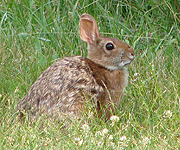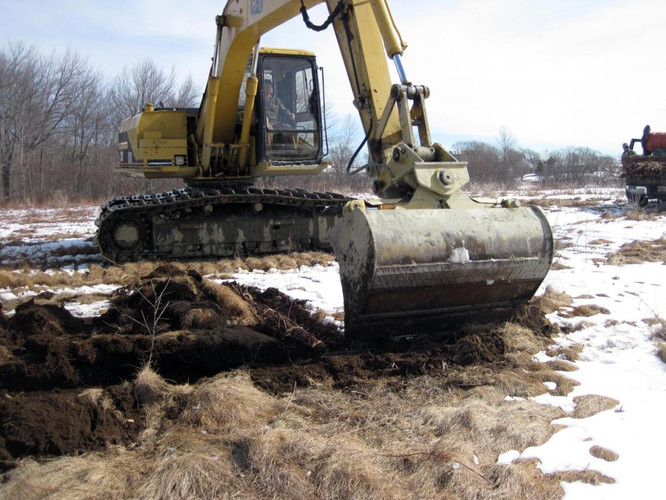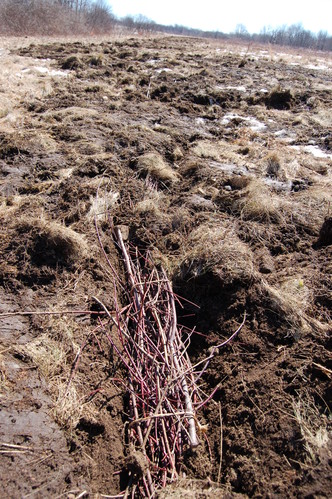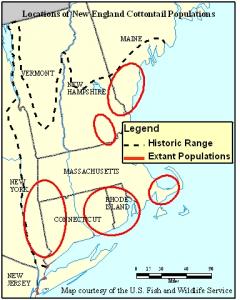The Wrack
The Wrack is the Wells Reserve blog, our collective logbook on the web.
The Wrack is the Wells Reserve blog, our collective logbook on the web.
 On Monday, a 13-ton machine rolled down the reserve's "F field" to make habitat for a 2-pound rabbit. The "Easter Excavator," a Caterpillar 311, was specially modified for working in sensitive areas such as ours. Despite its burly bearing, the excavator exerted less than 5½ pounds of pressure per square inch on the work site. Evidence of its visit is visible along the Muskie Trail for now, but as the grassland greens up this spring the fresh signs should quickly fade away.
On Monday, a 13-ton machine rolled down the reserve's "F field" to make habitat for a 2-pound rabbit. The "Easter Excavator," a Caterpillar 311, was specially modified for working in sensitive areas such as ours. Despite its burly bearing, the excavator exerted less than 5½ pounds of pressure per square inch on the work site. Evidence of its visit is visible along the Muskie Trail for now, but as the grassland greens up this spring the fresh signs should quickly fade away.

The machine's job was simple: Assist Environmental Restoration Services in planting 150 6-foot by 6-inch silky dogwood wattles in an area being managed specifically for New England cottontail rabbits and other brush-loving wildlife.
 Plant wattles are bunches of shrub branches — willow, alder, or dogwood, for example — bundled, bound, and planted horizontally in troughs. If all goes well, roots grow downward and plants sprout upward, creating the kind of thick growth required by New England cottontails. Two test lanes that were planted last year had performed well, so managers decided to lay down 900 linear feet over 1.7 acres this spring.
Plant wattles are bunches of shrub branches — willow, alder, or dogwood, for example — bundled, bound, and planted horizontally in troughs. If all goes well, roots grow downward and plants sprout upward, creating the kind of thick growth required by New England cottontails. Two test lanes that were planted last year had performed well, so managers decided to lay down 900 linear feet over 1.7 acres this spring.
 The job was done quickly, thanks to a machine that could dig 150 troughs in little more than a morning and grade the surrounding soil where necessary for good drainage. It's not the first time heavy equipment has been brought in on behalf of the little bunny; several years ago and not far from this spring's project area, the reserve hosted its first mechanical coppice invigorator.
The job was done quickly, thanks to a machine that could dig 150 troughs in little more than a morning and grade the surrounding soil where necessary for good drainage. It's not the first time heavy equipment has been brought in on behalf of the little bunny; several years ago and not far from this spring's project area, the reserve hosted its first mechanical coppice invigorator.
The New England cottontail, a candidate for listing under the Endangered Species Act, needs all the help it can get. Once widespread in the northeast, its distribution is now limited to five clusters of sites around New England and New York.
The wattle project was completed thanks to the USDA Natural Resource Conservation Service's Wildlife Habitat Incentives Program and the USFWS Partners for Wildlife program.